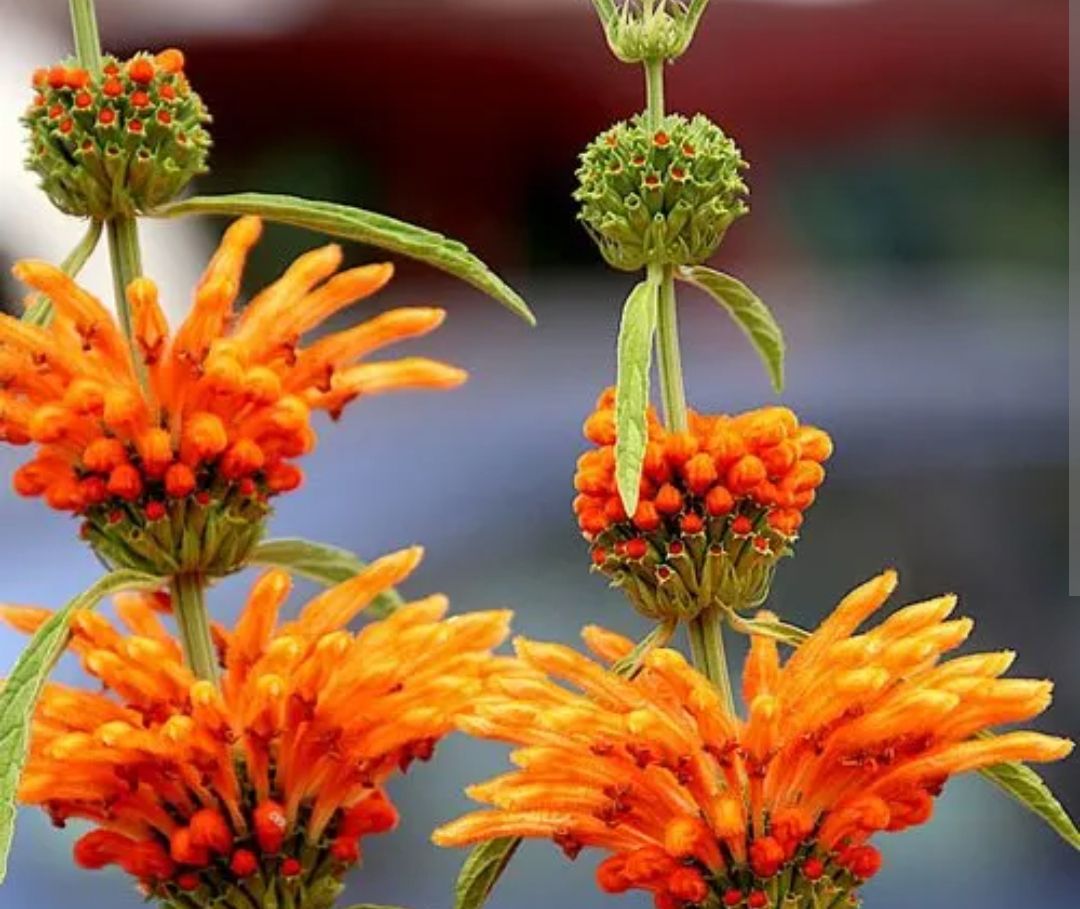Lion's Tail
Lion’s Tail (Leonotis leonurus), also known as Wild Dagga or Lion’s Ear, is a bold, drought-tolerant South African shrub prized for its bright orange, fuzzy flowers that bloom in stacked whorls, resembling a lion’s tail. It thrives in warm, dry climates and is a favourite for attracting bees, birds, and butterflies.
Known in traditional African medicine, it’s used for coughs, fever, skin conditions, and mild pain relief, often brewed as tea, smoked, or applied as a poultice. While not eaten as food, the leaves and flowers are sometimes steeped for calming herbal infusions. In some traditions, it’s used to soothe stress, reduce high blood pressure, or treat bites and infections. It is not recommended for regular internal use without guidance.
Features:
Ideal prune height: 1.5 to 2 metres
pH range: 6 to 7.5
Sun preference: Full sun
Minimum pot size by year 5: 30L
Time to flower: 6 to 12 months
Harvest period: Spring to late autumn (for leaves and flowers)
Notable traits: Traditional medicinal plant, highly ornamental, drought-tolerant, supports pollinators
Lion’s Tail is low-maintenance and grows well in poor soil, provided it drains freely. It prefers full sun and benefits from light pruning after flowering to maintain shape. In cooler climates it may die back to the base but usually regrows. It performs well in gardens or large pots and is well-suited to Perth and similar warm regions.
An excellent choice for a medicinal garden or bee-attracting border, Lion’s Tail stands out for beauty and usefulness in one tough, striking plant.
lion’s tail plant, wild dagga, leonotis leonurus, drought-tolerant medicinal plants, bee garden, orange flowering shrubs, african traditional herbs, herbal tea plant
